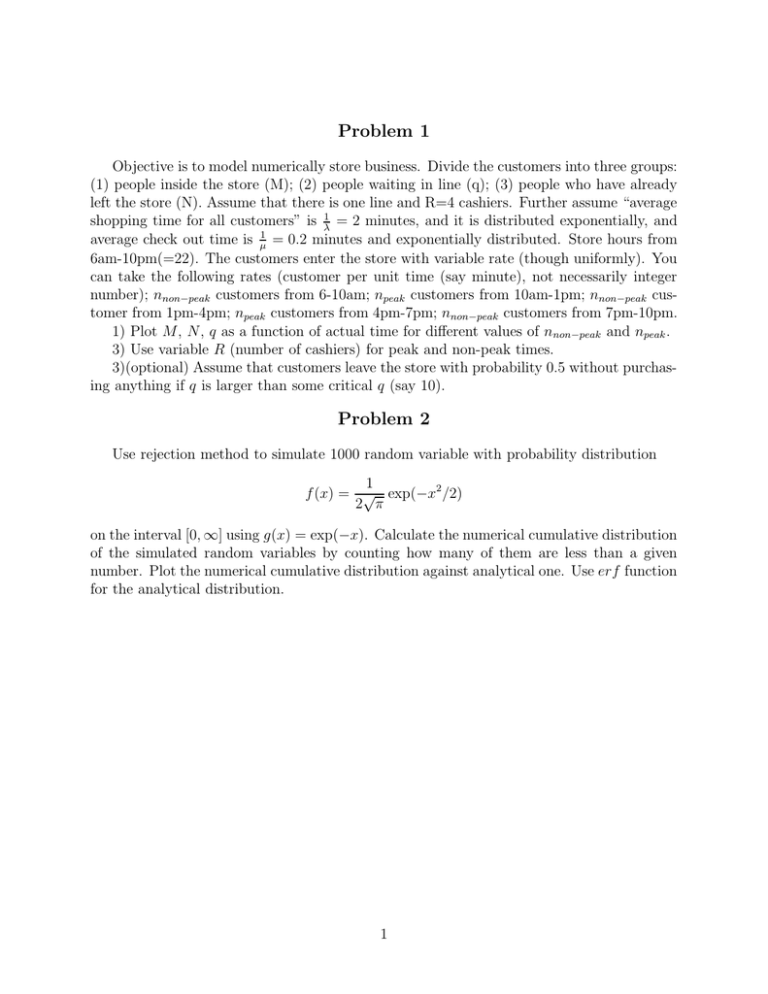Problem 1
advertisement

Problem 1 Objective is to model numerically store business. Divide the customers into three groups: (1) people inside the store (M); (2) people waiting in line (q); (3) people who have already left the store (N). Assume that there is one line and R=4 cashiers. Further assume “average shopping time for all customers” is λ1 = 2 minutes, and it is distributed exponentially, and average check out time is µ1 = 0.2 minutes and exponentially distributed. Store hours from 6am-10pm(=22). The customers enter the store with variable rate (though uniformly). You can take the following rates (customer per unit time (say minute), not necessarily integer number); nnon−peak customers from 6-10am; npeak customers from 10am-1pm; nnon−peak customer from 1pm-4pm; npeak customers from 4pm-7pm; nnon−peak customers from 7pm-10pm. 1) Plot M , N , q as a function of actual time for different values of nnon−peak and npeak . 3) Use variable R (number of cashiers) for peak and non-peak times. 3)(optional) Assume that customers leave the store with probability 0.5 without purchasing anything if q is larger than some critical q (say 10). Problem 2 Use rejection method to simulate 1000 random variable with probability distribution 1 f (x) = √ exp(−x2 /2) 2 π on the interval [0, ∞] using g(x) = exp(−x). Calculate the numerical cumulative distribution of the simulated random variables by counting how many of them are less than a given number. Plot the numerical cumulative distribution against analytical one. Use erf function for the analytical distribution. 1



